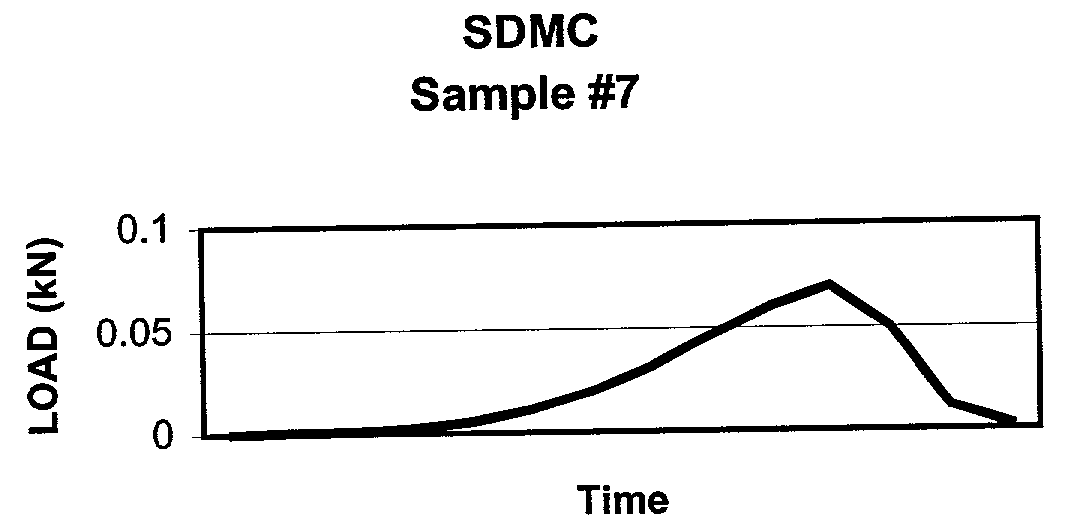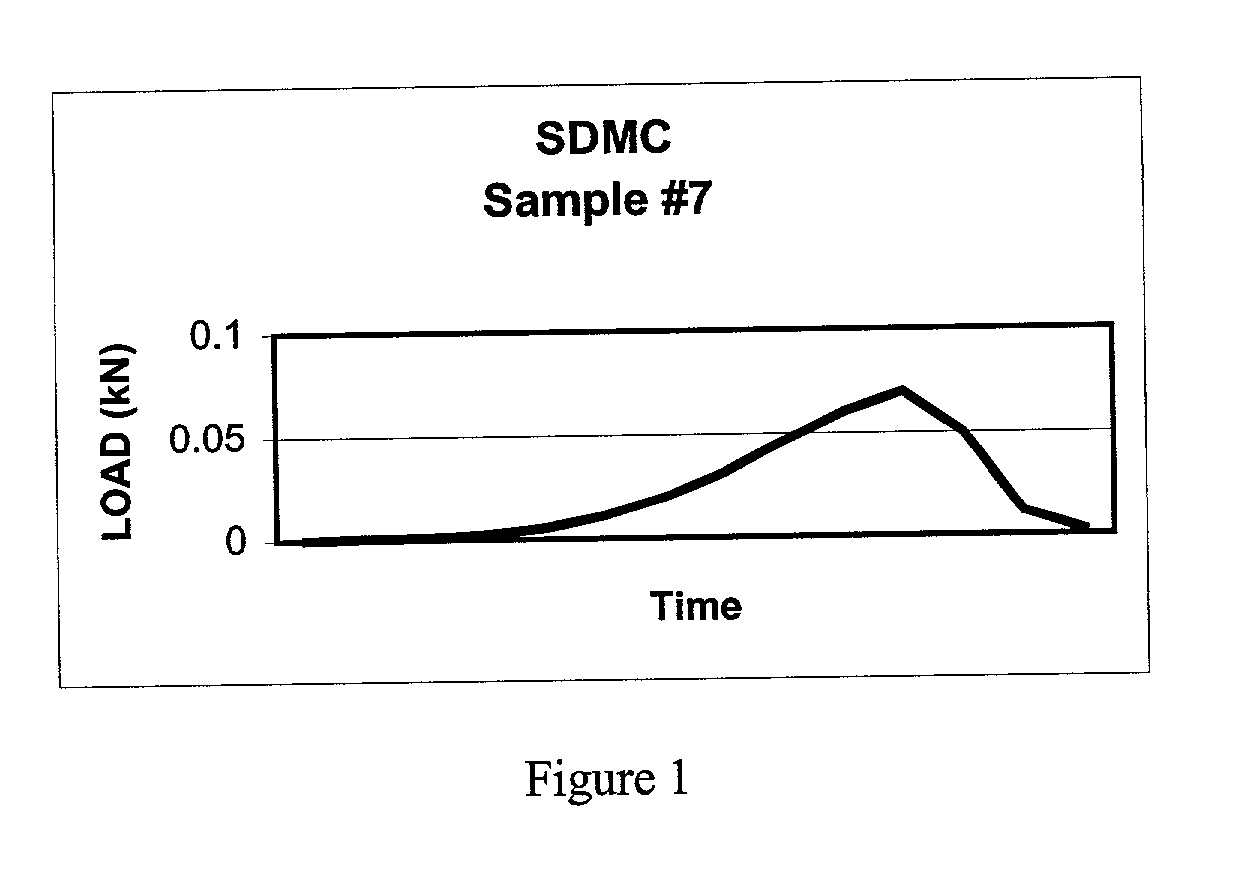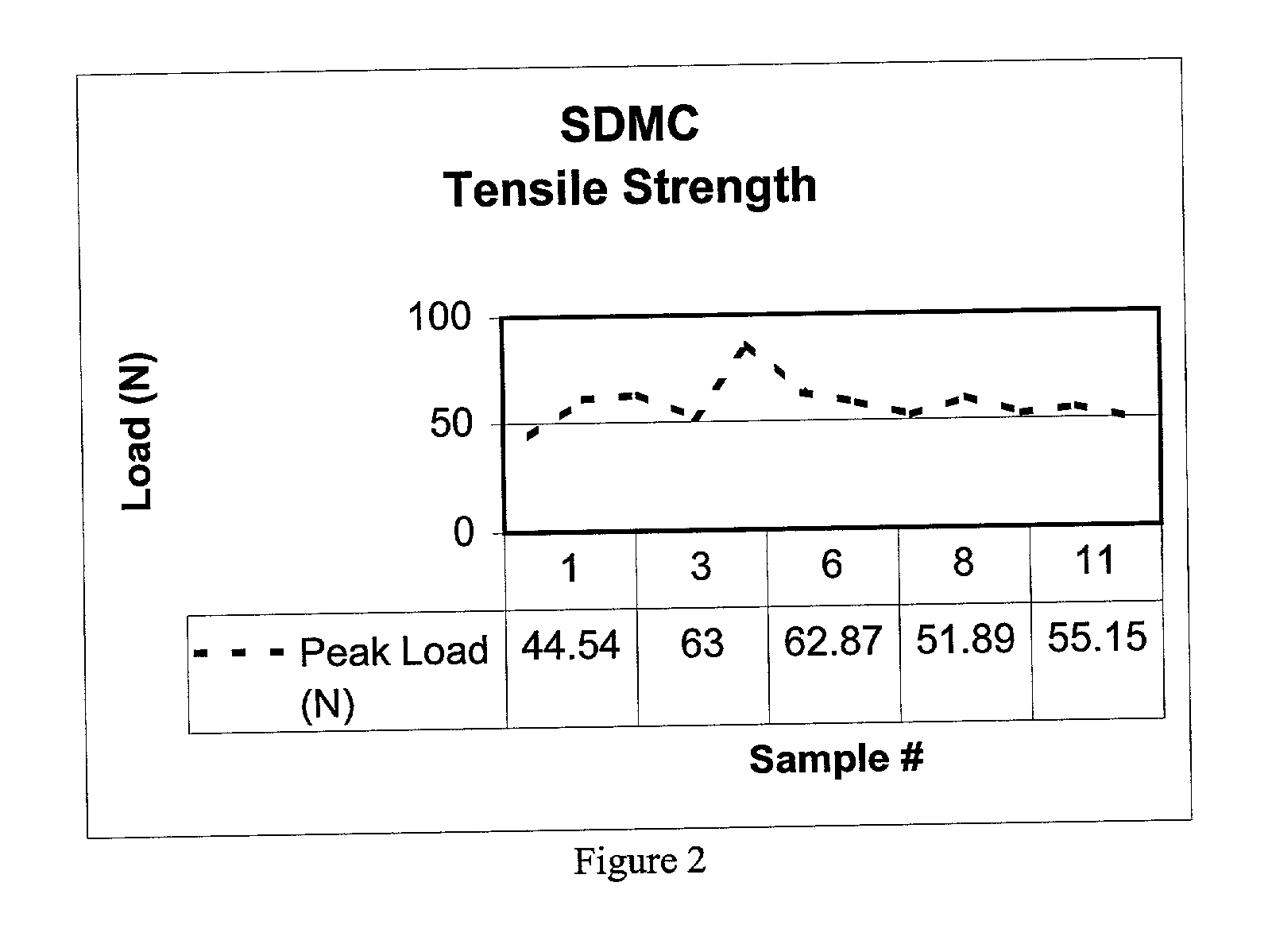Solvent dehydrated microbially-derived cellulose for in vivo implantation
a technology of implantable cellulose and solution, which is applied in the field of microbially-derived implantable cellulose, can solve the problems of limited physical and biochemical properties, limited range of synthetic materials, and prior art failure to mention the possibility of using a unique form of cellulose produced by certain unicellular cells, etc., and achieves less interfibril surface tension , the effect of reducing surface tension
- Summary
- Abstract
- Description
- Claims
- Application Information
AI Technical Summary
Benefits of technology
Problems solved by technology
Method used
Image
Examples
example 2
Manufacture of Solvent Dehydrated Microbially-Derived Films of Varying Thicknesses
[0049] Thin (0.5.times. standard) and thick (2.times. standard) solvent dehydrated microbially-derived cellulose films produced by A. xylinum were prepared generally according to the procedure of Example 1
[0050] From a propagation vessel, sterilized media was inoculated with A. xylinum, filled into bioreactor trays at two different volumes of approximately 90 g and 360 g respectively, and incubated until optimal growth of the pellicle was observed. The pellicles were extracted from the trays and then underwent chemical processing (depyrogenation) in a tank of 8% sodium hydroxide which was heated to about 90.degree. C. to 95.degree. C. for about one hour. The pellicles then underwent a continuous rinse with filtered water until the pH was below 10.0. The material was treated with 0.25% hydrogen peroxide at 44.degree. C. to 45.degree. C. for about 30 minutes when the films were observed to be adequately ...
example 3
Mechanical Properties Of Solvent Dehydrated Microbially-Derived Cellulose Films
[0052] A. Testing of Mechanical Properties of Microbially-Derived Cellulose
[0053] Mechanical tests of the subject solvent dehydrated microbially-derived cellulose were performed to determine the tensile strength, elongation, and suture retention (pull-out) as applicable for an implantable medical material. Samples from the present invention were cut into 1 cm.times.4 cm strips for testing, using surgical scissors and a template. For example, each strip was not cut from an area parallel to the edge of the film, but strips were cut from various directions within the film to represent the overall area within each film. The thickness was measured using electronic calipers in millimeters, accurate to .+-.0.03 mm.
[0054] The mechanical properties of the solvent dehydrated microbially-derived cellulose were determined using a tensile machine (United Calibration Corporation) Model SSTM-1-PC with a load versus cros...
example 4
Suture Retention
[0061] Instructions for suturing commercial products typically require suturing no less than 2 mm from the edge of the product to the soft tissue at the surgical site; therefore all samples were tested by inserting the suture 2 mm from the bottom edge and 3 mm from the side of the sample (See FIG. 5). It is necessary to examine suture pull-out data when comparing to other materials and commercial products to determine fundamental performance.
[0062] A typical stress-strain curve of the present invention after re-hydration and suture retention testing is shown in FIG. 6.
[0063] Table 2 shows testing results where the Peak Load (lbs) was converted to Peak Load (Newtons). There were nineteen samples which fell within the inventor's Standard Operating Procedure TST006 Determination of Suture Retention (Pull-out) Strength of Solvent Dehydrated Microbial Cellulose. This test method instructs the operator to discard any break suture tear which results in a value below 50% of ...
PUM
| Property | Measurement | Unit |
|---|---|---|
| pore size | aaaaa | aaaaa |
| temperature | aaaaa | aaaaa |
| thickness | aaaaa | aaaaa |
Abstract
Description
Claims
Application Information
 Login to View More
Login to View More - R&D
- Intellectual Property
- Life Sciences
- Materials
- Tech Scout
- Unparalleled Data Quality
- Higher Quality Content
- 60% Fewer Hallucinations
Browse by: Latest US Patents, China's latest patents, Technical Efficacy Thesaurus, Application Domain, Technology Topic, Popular Technical Reports.
© 2025 PatSnap. All rights reserved.Legal|Privacy policy|Modern Slavery Act Transparency Statement|Sitemap|About US| Contact US: help@patsnap.com



